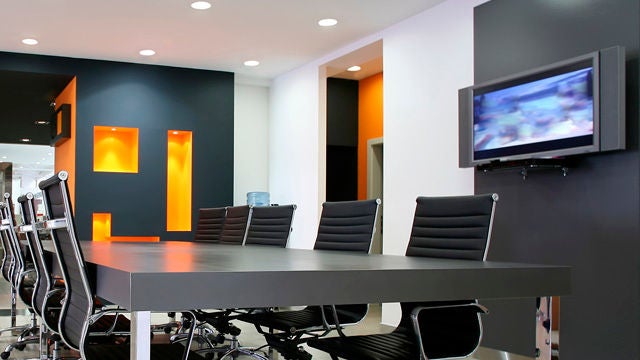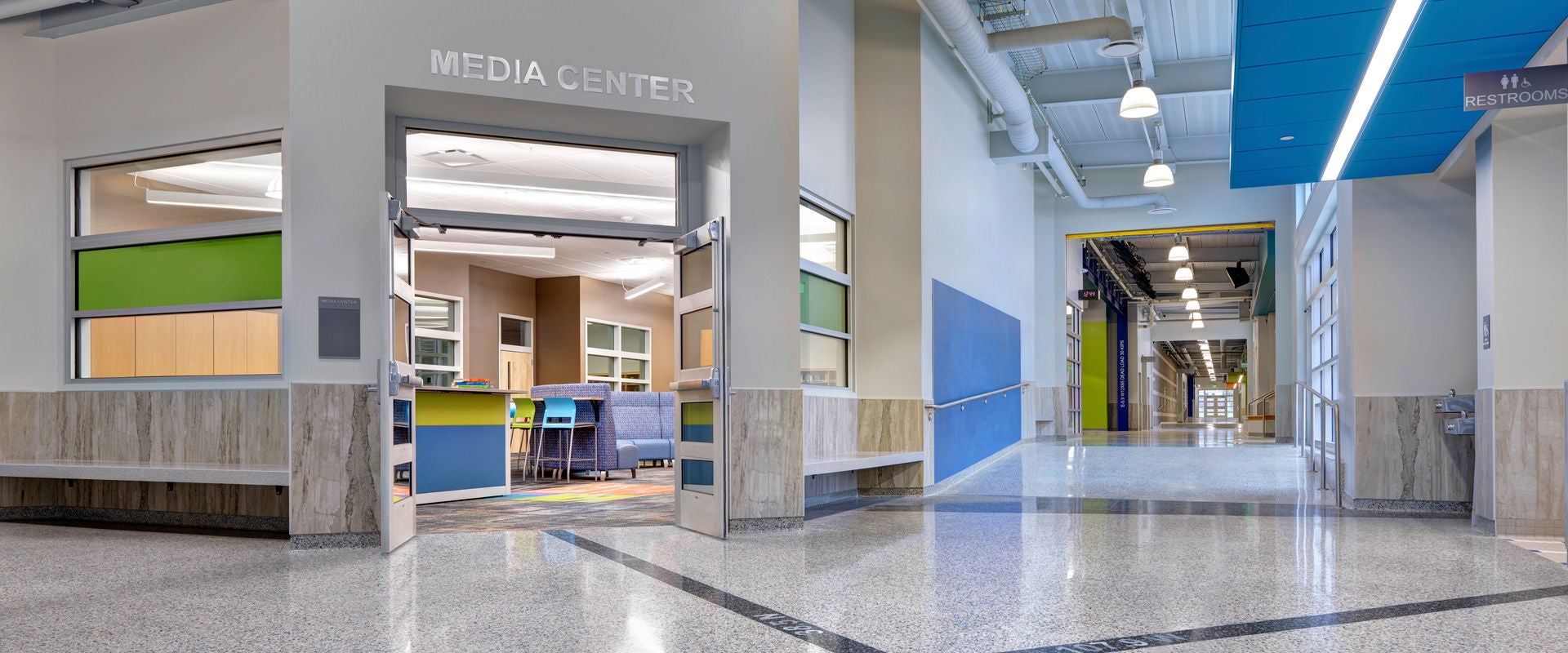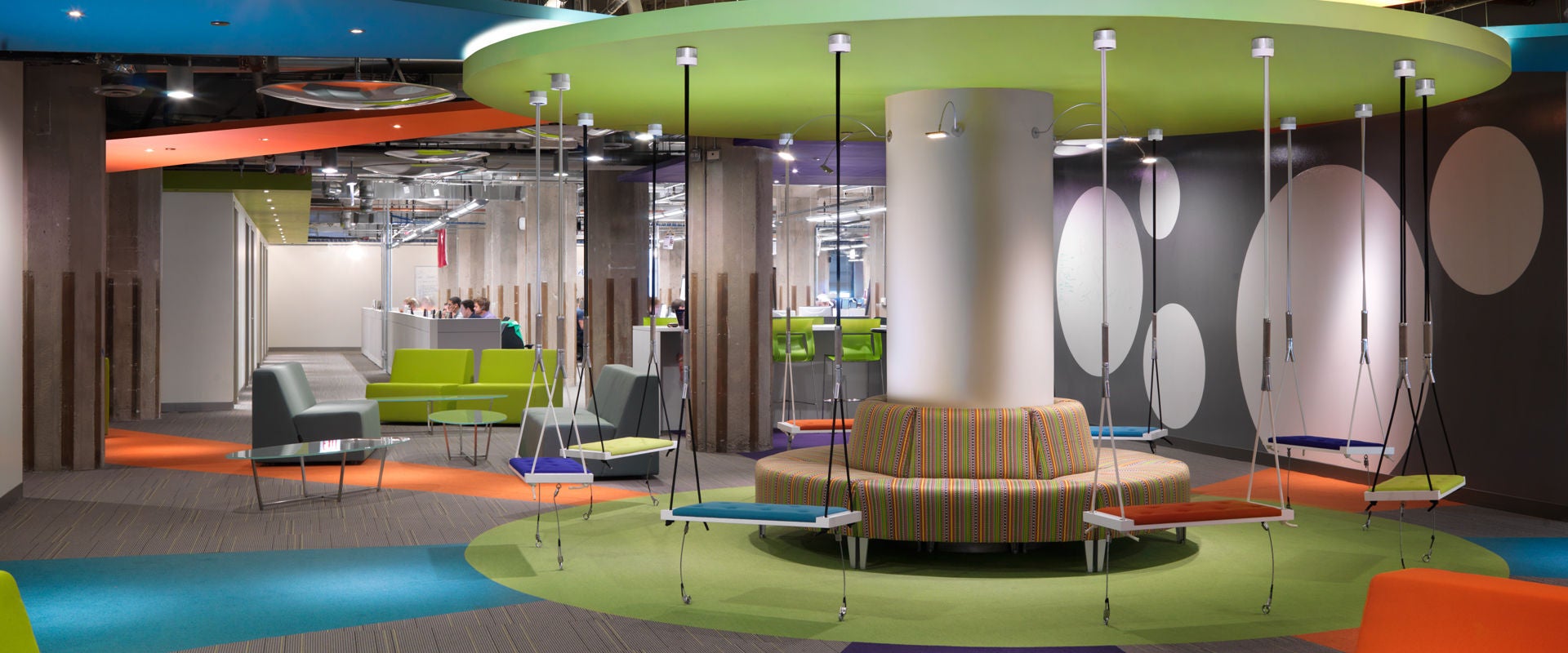Layer ambient (general), task and accent lighting for the best balance of light throughout the space
Lighting is one of the best, and easiest, ways to improve a commercial environment.
Designing an office lighting plan involves more than calculations and luminaire selection; different areas require different lighting needs. It is important to work on a space-byspace basis to determine specific lighting design criteria. There are energy codes to follow, concerns about energy costs and efficiency of the lighting system, as well as the need to incorporate flexibility for easy adjustments as the company grows and lighting needs change.
ConTech Lighting will guide you through the lighting process and be your lighting resource. It takes time and effort to ensure that the investment in lighting will be returned to the bottom line, and it’s a partnership ConTech will be involved with every step of the way.
Goals of Commercial Lighting
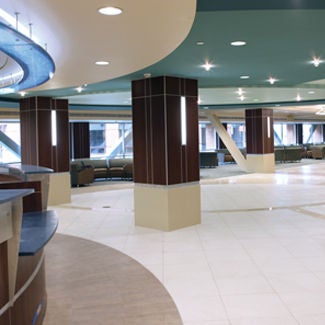
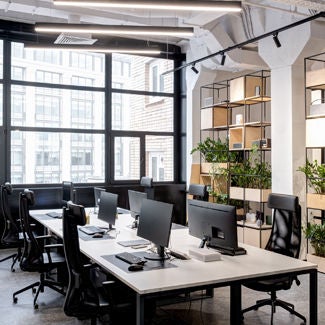
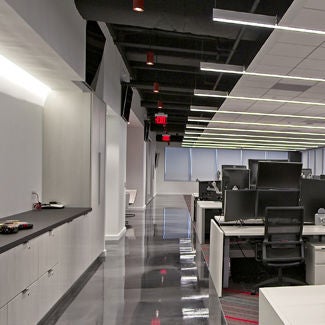
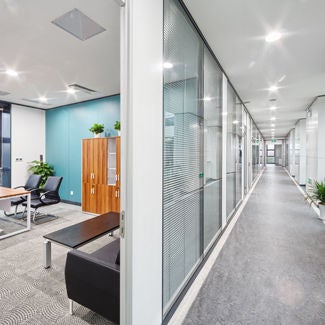
Integrate daylight and use dimming controls to address energy efficiency and energy codes and reduce energy costs
Use families of luminaries for cohesiveness in the lighting design
Create a cohesive environment that enhances the feeling of well-being and allows a comfortable transition from space to space while making it functional and safe
Layers of Light
GENERAL/AMBIENT LIGHTING
- Main source of illumination
- Uniform, base level of lighting
- Comfortable level of brightness
- Focus of energy reduction
- Diffused general lighting ensures a sense of well-being
- Light level should be uniform and neutral
Light-colored rooms may not need much ambient lighting; there may be enough reflection from the other layers of light to compensate. Rooms with darker surfaces may need more ambient lighting, as dark colors absorb more light.
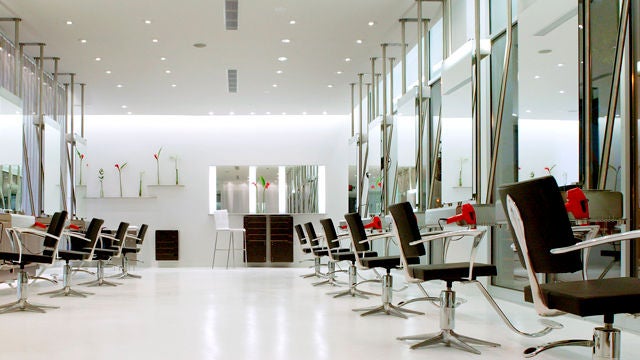
TASK LIGHTING
- Provides a focused, localized, and higher level of illumination
- Use energy efficient sources to reduce operating costs
- Utilize a generally low level of ambient light with strategically placed task luminaires
- A 3:1 ratio of task lighting to general illumination provides a nice contrast
Task lighting is most effective when used as a supplement to general lighting; it should eliminate shadows on the specific illuminated area, while preventing glare from the lamp or off surfaces. Task lighting reduces the reliance on overhead lighting, and provides a better quality of light for specific tasks.

ACCENT LIGHTING
- Reinforces design aesthetics and creates a dramatic emphasis on shapes, textures, finishes, and colors
- Uses a focused, or point, light source or sources
- A 5:1 ratio of accent lighting to ambient light makes objects stand out and creates a significant visual effect
Accent lighting should be more precise and of higher intensity than the surrounding ambient light. Accenting everything and emphasizing nothing is a common mistake with accent lighting; always keep in mind that there is such a thing as providing too much light.
